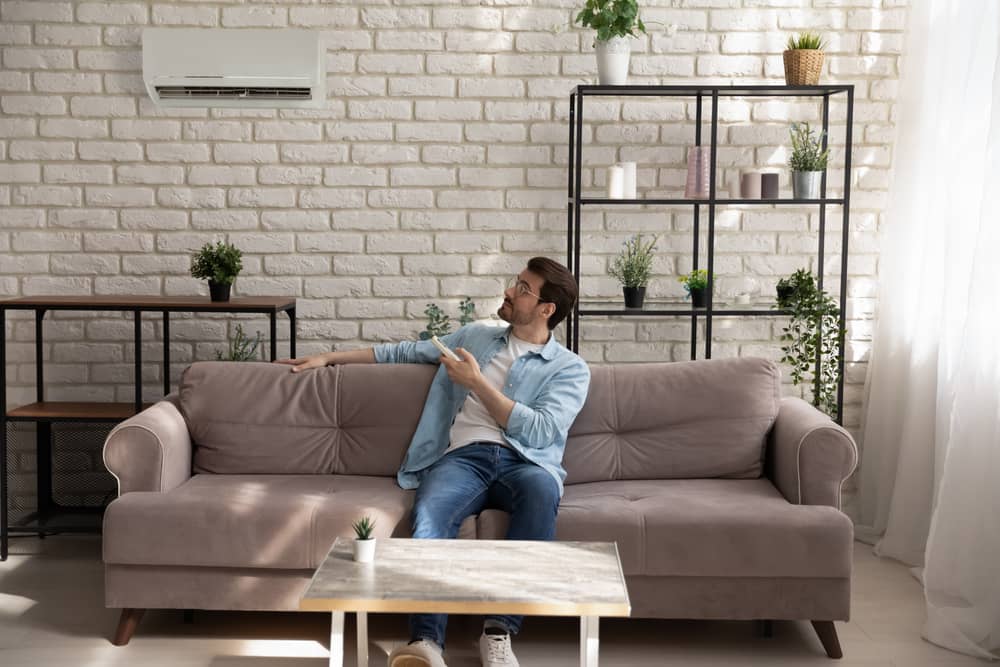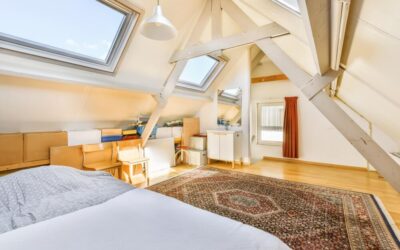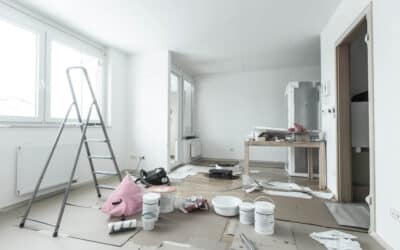Two and three-story apartment buildings are generally referred to as garden apartment buildings. Garden apartments comprise an overwhelming portion of the marketplace.
Although these buildings come in many shapes and configurations, the most common format is common hallways with apartments on either side, or separate entrances limited to 4, 6, 8, or perhaps 12 residences. Less typical within the genre of garden apartments are private entrances, although they do exist. Private entrance apartments give residents privacy similar to that associated with a single-family dwelling.
Privacy Considerations
As suggested, there is a wide array of building configurations that offer residents a range of living environments from a private, or nearly private, residence to living close to a few or many neighbors. As with most features, choosing a configuration is a matter of individual preference and there is no right or wrong answer. Most garden apartment buildings do not have elevators, but if walking steps is a problem, you should focus your attention on a first-floor unit or a building with an elevator.
An important distinction exists between ground-level and true first-floor apartments. Ground-level apartments may actually be built partly underground. Moisture control and limited light are inherently negative characteristics of such apartments. Typically, these apartments are found in older buildings.
A true first-floor apartment is completely above the ground, nearly or completely barrier-free (few to no steps), and water is graded away from all living areas. First-floor apartments are quite desirable. However, the terminology may vary. When in doubt ask the rental agent for clarification.
Construction: Quality and Design
Apartment construction quality and design are of utmost importance to most renters. If you ever lived in an apartment, you certainly understand the importance of sound and fire control. Sound control is perhaps the most important component that affects the quality of life of a resident.
Fire Safety
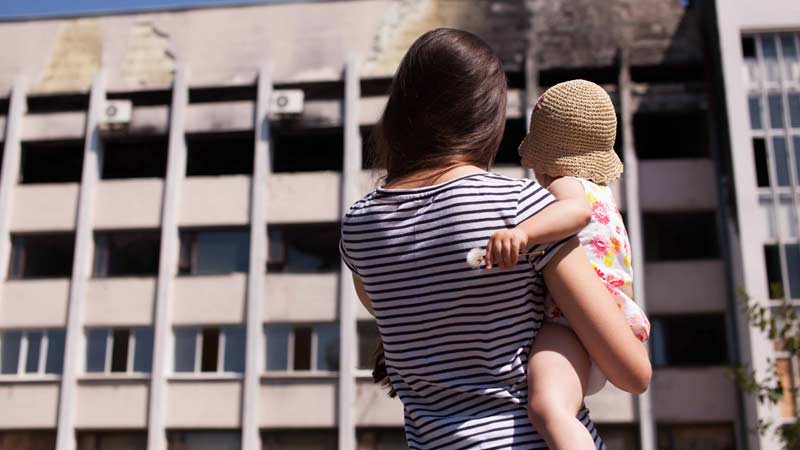
Fire safety should be the most important feature in choosing a place to live and is arguably one of the most overlooked features of apartment shoppers.
Fire safety is provided by construction materials and systems. Buildings constructed with fire sprinkler systems and rated concrete firewalls and floors are vastly superior to wooden framed construction with sprinklers and rated walls and floors. Among the best materials for such fire protection are brick and/or concrete walls as well as concrete floors.
Early warning is key to a good fire system, and a system built with hard-wired smoke detectors and sounding devices is essential. Buildings that feature systems with superior fire safety often also provide superior sound control. This is the case with concrete walls and floors. Generally, concrete floors control noise at levels many times greater than any engineered wooden floor can provide. Sound control is not simply an issue between apartments. Sound control should also be considered with respect to noises originating on the exterior of your home. Materials such as brick will reduce such “noise” transmission. It is a mistake for a prospective tenant not to ask about a building’s sound and fire control.
Heating and Air Conditioning
Other issues affecting the quality of life are heating and air conditioning, energy conservation measures, security and trash handling.
Many new buildings have been built with central heating and air conditioning. This is not the case with older buildings. In many older buildings, the resident has no control as to when heat or air conditioning is provided (the law provides heat to be available between October 1st and April 15th). Mother Nature doesn’t always follow a schedule, and nothing is more frustrating than to be told you can’t have heat until October 1st or after April 15th when it is cold outside. The added disadvantage of such a system is that often times the air conditioning system is based on window / wall sleeved units which provide inadequate as well as uneven cooling. A properly designed individually controlled central heating and air-conditioning system is superior in its delivery of both heat and air conditioning. It provides total control over timing and temperature and helps energy-conscious residents by enabling billing based on actual usage.
Energy consumption is constantly in the news because it affects our climate, our independence as a country, and on a more personal level, a family’s disposable income. Buildings built after 1985 were built subject to federal and state energy conservation requirements. Before 1985 a building’s energy conservation features were subject to the whim of the builder. Many building owners have been aggressive in making improvements to their apartments of all ages in an effort to reduce the monthly energy cost to both the resident and themselves. The difference in energy costs to a resident living in a building with as compared to withou energy conservation features could be hundreds of dollars a year.
So what should an apartment shopper do? Check to see if central air is an option, if windows are insulated, if light bulbs are energy efficient, if water fixtures have water-saving features, and ask about the energy efficiency or R factor (measure of the resistance to heat and cooling loss) of the walls and ceilings.
Security
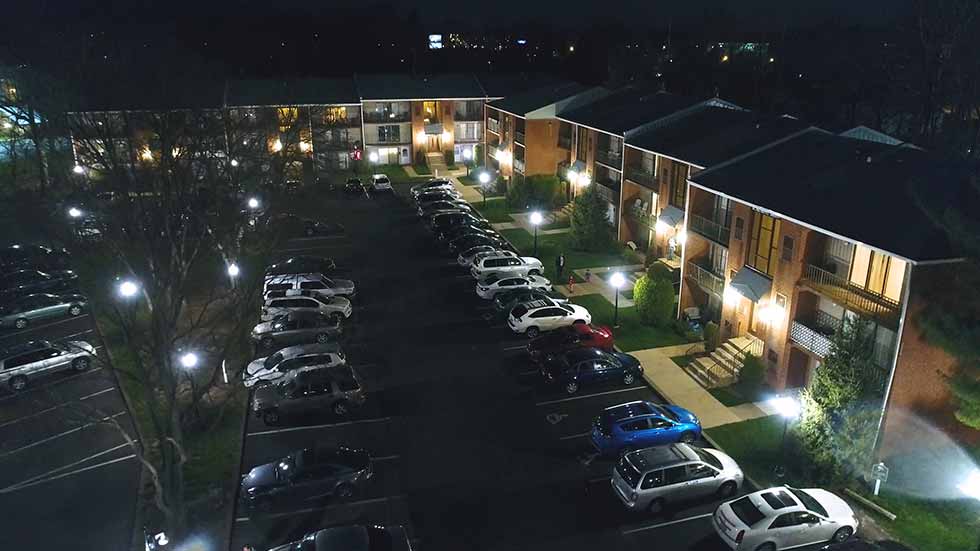
Looks can be deceiving and it’s prudent to check out what security features are present in an apartment you are considering renting. Review local crime statistics. Ask if the lock on your apartment door gets changed between tenants. Take notice if common doors have automatic door closers, if they are propped open, and if the building’s interior hallways and exterior parking lots have good lighting.
No property can guarantee a resident won’t be the victim of a crime, but good precautions can be a very significant deterrent.
Trash and Recycling
Trash handling convenience is another overlooked element of apartment living, both from a practical and cosmetic aspect. While some garden buildings feature trash handling within the building, the overwhelming majority handle trash with containers located along the parking areas. Nothing says more about a building’s management than an overflowing trash container. Residents should make sure trash containers are conveniently located. An attractive and responsible apartment community has garbage containers enclosed and easily accessible recycling containers.
Apartment building amenities are not a necessity, but they add value to a resident. A swimming pool and clubhouse can offer a resident a place to exercise, relax and socialize. For those residents in their retirement years, a social club with organized activities adds additional value. Many buildings do not provide additional amenities. There is a growing trend in new buildings to create a lifestyle package that includes fitness rooms, game rooms, and media rooms. Building amenities are very appealing, but once again this is an individual preference, and there are no right or wrong answers as to if they should be on your priority list.

